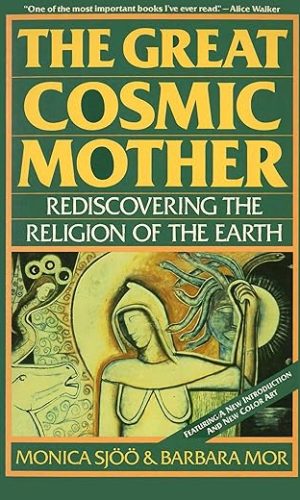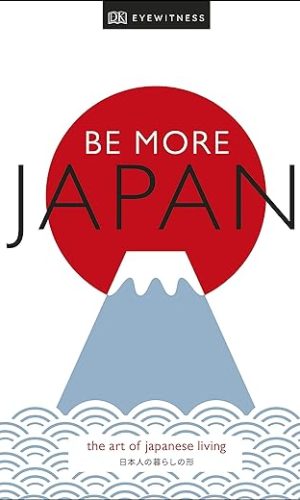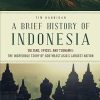Brief History of Indonesia: Sultans, Spices, and Tsunamis: the Incredible Story of Southeast Asia’s Largest Nation (Brief History Of Asia Series)
£11.20£14.20 (-21%)
Indonesia is by far the largest nation in Southeast Asia and one of the largest countries in the world and is fourth largest in terms of population after the United States. Indonesian history and culture are especially relevant today as the Island nation is an emerging power in the region with a dynamic new leader. It is a land of incredible diversity and unending paradoxes that has a long and rich history stretching back a thousand years and more. Indonesia is the fabled “Spice Islands” of every school child’s dreams one of the most colourful and fascinating countries in history. These are the islands that Europeans set out on countless voyages of discovery to find and later fought bitterly over in the 15th, 16th and 17th centuries. This was the land that Christopher Columbus sought and Magellan actually reached and explored. One tiny Indonesian island was even exchanged for the island of Manhattan in 1667!
Read more
Additional information
| Publisher | Edition, First ed. (10 Sept. 2015), First Edition, Tuttle Publishing |
|---|---|
| Language | English |
| Paperback | 288 pages |
| ISBN-10 | 0804844763 |
| ISBN-13 | 978-0804844765 |
| Dimensions | 12.7 x 2.54 x 20.96 cm |









by Malarchy
A Brief History of Indonesia is a 277 page account of the country beginning in prehistory and concluding in the present day. In eminently readable fashion Tim Hannigan has put together a tremendous account of Indonesian history through its early Indianisation and the Hindu-Buddhist era, the coming of Islam, the early colonial period, the long rule by the Dutch, and the complexities of the 20th and 21st centuries. The work does not claim ot be the authority on any of the periods in question but it is a great starting point for an understanding of what made Indonesia.
Inevitably the work is a little weaker on the prehistory than the more recent times. An understanding of Indonesian prehistory is much better served by the popular history of
Guns, Germs and Steel
. It doesn’t help that the fictional accounts which start each chapter are inevitably much more imagined for such a long time ago. These little fictional interludes at the start of each chapter are actually pretty good as the later chapters arrive, the work improves greatly as a whole through its duration and is well worth investing in after the rocky start.
The level of description of the early recorded history of Indonesia is impressive. This is a well-researched book. The depiction of various entities that arose prior to the arrival of Islam is nicely described. The narrative ties in the construction of places like Borobudur and Prambanan in a way that connects these ancient sites to locations easily understood by a modern reader.
The description of place is always difficult for history. Hannigan uses an artful form in describing the place as the archipelago. He avoids political connotations by doing so and it is a convenient shorthand. Inevitably, some parts of the archipelago are better served in the narrative than others. This is largely a Java-centric work. That is perhaps inevitable given the predominance of Javanese people and culture in this region. Places further afield get less description, some such as Borneo or Papua do not really feature that much at all given their sheer geographic size.
Places like Java and Sumatra are well covered. The coming of Islam is a defining feature in the archipelago and Hannigan covers it well. This is not Islamisation through conquest unlike so many other places. Hannigan does not imply what this means in practice but leaves the reader to understand the syncretic form of worship that resulted.
Much of the book covers the colonial period. The arrival of the Portuguese and the way their traders began to muscle in on the spice trade is fun to read. Of course so much more of the history is the story of the Dutch East Indies. The Dutch are never the colonial monsters the revisionists of the 20th century often proclaimed. Individual Dutch colonial leaders are assessed on their own merits, their personalities and policy inclinations given due weight.
It is fascinating to read of the colonial government and its efforts to keep order in obscure parts of the archipelago. The lives of the colonists are clearly not always easy or happy. An interesting insight to show how those marooned on the outer islands also lived a life of hardship. The death rates among colonists are not given a huge amount of attention but there is enough to show that the Dutch East Indies was not an easy place to live.
The brief interlude of British rule under Raffles comes under some scrutiny. Tim Hannigan is no great fan of Raffles and that clearly shows. Raffles is put into context and described as being part of his time rather than some kind of exception. British rule is not given the plaudits or positive comparison with the Dutch that popular legend has ascribed it.
The one person who does fare extremely well in Hannigan’s analysis is Alfred Wallace. Of course Wallace never had to take the kinds of tough decisions of those in positions of power. Nevertheless, Wallace’s research and his recognition of the boundary between Asian and Australasian fauna and flora still has echoes today.
Hannigan’s historical analysis keeps its sharpness through the 20th century. He takes apart some of the mythology surrounding the independence leaders in a clear and objective way. Sukarno in particular is given a realistic portrait as a brilliant leader prone to womanising and impetuousness. Sukarno’s importance to Indonesia is undoubted and Hannigan gives him plenty of space in the narrative. Modern attempts by the PDI-P to rehabilitate his image are ill at ease with the erratic nature of his actual leadership and the autocracy he ushered in.
Hannigan probably does not go far enough in outlining Sukarno’s failings. In particular the failure of Konfrontasi is not barely a blip in the tale. It is strange that a work of this kind does not include description of the impact on Sukarno’s leadership of his main military defeat. Konfrontasi is a crucial part of the events which eventually toppled Sukarno so it is a bit odd not to read about it here.
The man who followed Sukarno has in modern times been demonised. Suharto was clearly a dictator despite his Golkar party’s participation in democracy. He was though a steading hand for a country often on the verge of tearing itself apart. Hannigan is fair in his assessment of Suharto. The problems of corruption, particularly related to his family are not detailed with too much description but they are there as a reminder of the corrosion that resulted in Suharto’s eventual downfall.
The work finishes with the democratic era. Hannigan rushes through it fairly quickly which feels right as much of it is not really history yet given the recency. The various democratic leaders are given short shrift for their failings but the promise of hope that the last President in the story offers is a reminder of how far Indonesia has come.
Some of the major incidents in Indonesia are covered. The Indian Ocean tsunami and subsequent impact on the Aceh peace process feature. Also within the narrative is the brutality conducted against Timor-Leste just as it became independent. Some things are clearly missing though. The environmental degradation of Sumatra through the palm oil plantations is not really addressed. Nor is the scale of the military assault against the Papuans which includes thousands of deaths from bombing raids, something an account of 20th century Indonesian history surely cannot ignore. Tensions with the local Chinese community crop up including accounts of massacres from previous centuries. It would have been interesting to read why such violence has recurred throughout Indonesian history.
Inevitably a book that covers the entirety of a country’s history will struggle to cover everything in depth. What A Brief History of Indonesia achieves so brilliantly is that it provides such a readable window into the country and provides such well-researched and reasoned analysis of such a fascinating part of the world.
by Javier Patria
Indonesia’s rich history is brilliantly explored in this book, delving deep from its prehistory to the post new order Indonesia. Easy to read for non-academics and a wonderful introduction for anyone to Indonesia.
by catholic reader
The author starts by bemoaning the dearth of readable, not overly scholarly, approachable histories of the the ‘archipelago’ , and then proceeds to produce an approachable history that sometimes is in danger of being a little too informal in its approach. As promised a brief history does seem to gallop through some fascinating, pre colonial societies, Muslim and pre -Muslim, and also gives what seems to be a balanced account of the colonial period (Portuguese, Dutch, British). In more modern times, despite barely mentioning the ‘almost’ war against Malaysia, it also provides a rather well balanced views of the roles of Post independence ‘giants’. A very good brief history, a very good introduction to Indonesia.
by Edgar R Wagner
It is exactly what it says on the tin: A Brief History of Indonesia. I found the early stuff somewhat confusing, almost inevitably really, with a lot of names I could neither pronounce nor remember, although I’m not sure that anyone could have done a better job than the author did here. As a European I started to find the book really interesting with the arrival of the Portuguese. From that point onwards I found the book an easy, interesting, and often humorous read. Excellent.
by Richard Arthur
Well written history, an excellent beginner’s guide to Indonesia’s complicated history.
by Keith Jahans
The Author has obviously done an enormous amount of research to uncover the facts, myths and legends behind the history of this remarkable country. The book makes an ideal companion to his earlier work, “Raffles and The British Invasion of Java”, which I reviewed in March 2015 and is also well worth the read.
Although, Raffles is briefly mentioned in this account, the book deals with the rise of Indonesia from prehistoric to modern times. It is an ideal buy for anyone wishing to visit Indonesia and I highly recommend this as a must read for anyone wishing to understand how colonial powers engage dominance over the countries they rule.
I bought a signed paperback copy from the author last July which I gave to my daughter before she returned to where she has been living in Indonesia in April and purchased a Kindle copy for myself. Of the two I prefer the paperback as the layout makes it easier to flick between the photographs at the centre of the book and the rest of the text.
by Amazon Customer
very interesting
by N C Griffin
From my knowledge of Indonesia his book is comprehensive without getting too bogged down.
The writing style is excellent. Not at all like a history book. For what I imagine is a first book quite outstanding